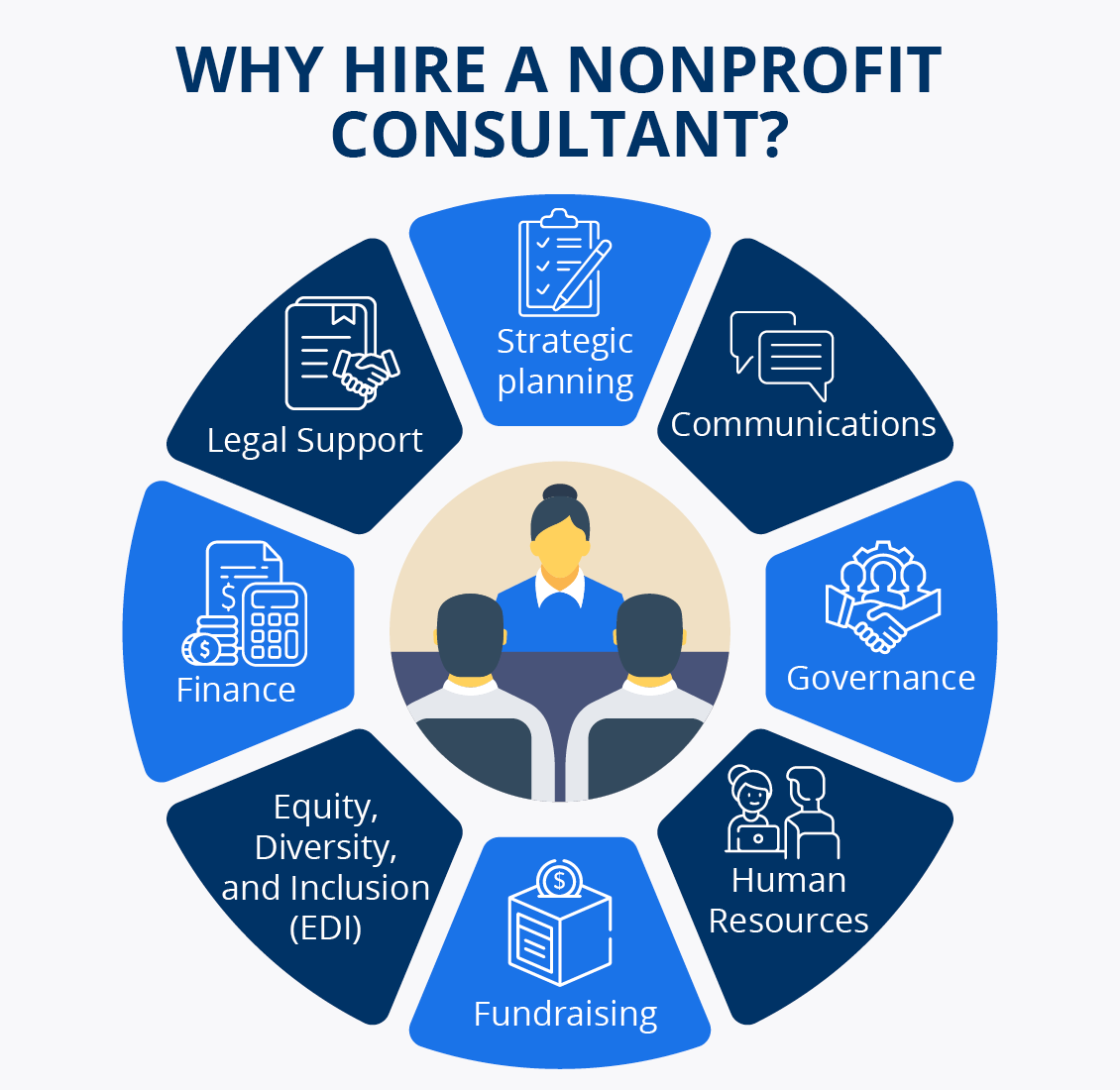Nonprofit Staff Training: How to Enhance Your Impact

Staff members are at the heart of nonprofit operations, so make sure they have the tools they need to succeed.
Introduction
There’s a lot that goes into running a successful nonprofit, from developing a clear mission statement to assembling a well-rounded board of directors. Fortunately, you don’t have to do it all alone. With a dedicated team of staff around you, you’ll be able to grow, bring your mission to life, and surmount any hurdles that come your way. That is, as long as your staff are equipped with the right tools and skills to handle their responsibilities.
Staff training is essential for the long-term success of any nonprofit, whether you’re helping team members develop management skills, communicate with stakeholders, or navigate specific software solutions.
According to the Center for Effective Philanthropy (CEP), nearly 50% of nonprofit leaders point to staff-related issues, from hiring to retention, as the leading challenge facing their organizations. This finding highlights just how important it is to concentrate on the internal needs of your nonprofit. Read on to learn how (and why) your nonprofit should prioritize staff development.
Why is Staff Training Important for Nonprofits?
Your nonprofit needs dedicated employees to advance its mission, but how do you attract and retain qualified individuals for the job? While a compelling salary can go a long way toward catching the interest of job seekers, your ultimate goal is to nurture a lasting investment in your organization and all that you do.
With a thoughtful employee training plan, your nonprofit can:
- Boost staff confidence. When people feel confident and capable in their roles, they’re not only more eager to come to work every day, but they’re also more empowered to take on challenging tasks to benefit your nonprofit’s goals.
- Increase engagement and retention. High employee engagement leads to productive staff members who are willing to go above and beyond for your nonprofit. Providing effective staff training demonstrates that you’re committed to their ongoing success in their roles. This investment makes them more likely to want to stick around for the long term.
- Better serve its beneficiaries. If your nonprofit consistently focuses on educating its employees on the latest technology and best practices in its sector, you’ll generate better results for the people you serve.
- Enhance its reputation. A high employee retention rate, coupled with an improved impact on your community, can significantly strengthen your nonprofit’s reputation in the eyes of donors, potential job candidates, and other stakeholders.
To access these benefits, you’ll need to go beyond onboarding to consider continuous development for your employees. However, this doesn’t mean you have to carve out a significant portion of your budget for staff training. Instead, focus on utilizing your existing resources to cultivate a culture of learning within your nonprofit.
4 Steps to Develop a Nonprofit Staff Training Plan
Every nonprofit has different needs, resources, and priorities. Therefore, it’s important to develop a nonprofit staff training plan tailored to your specific organization. Follow these steps to build your own:
1. Identify specific staff training needs.
Acquire a better understanding of your nonprofit’s staff training needs by conducting preliminary skills assessments. Through these pre-tests, you’ll be able to pinpoint specific knowledge or skill gaps to fill across your organization to increase effectiveness. Additionally, send out surveys to collect input from your employees themselves.
Depending on their roles, they may indicate that they need more support in:
- Operating technology, such as your CRM.
- Managing team members.
- Running fundraising campaigns.
- Administering programs.
- Communicating with supporters.
- Understanding nonprofit bookkeeping and accounting.
While there’s always room for improvement in each of these areas, refer to the data you’ve collected from skills assessments and surveys to determine which are the most immediate priorities for your nonprofit. Additionally, couple this information with other observations you’ve noted that could significantly improve your training approach.
2. Determine which types of training to offer.
Based on your budget and training timeline, decide on which types of training you’ll offer staff members. Present a mixture of formal and informal opportunities that will appeal to varying learning preferences and interests.
For instance, consider the following nonprofit staff training options to incorporate into your plan:
- Cohort-based learning. Register your employees for cohort-based courses to engage them in live and interactive learning. These courses will allow them to cultivate a sense of community with other nonprofit professionals, so they can benefit from the knowledge of both instructors and peers in the sector. Furthermore, this type of learning often takes place online, making it easy for participants to interact without needing to meet up at a single location.
- Workshops. Host interactive workshops for your employees to help them develop skills and acquire knowledge as a team. You can either enroll them in existing workshops or host your own by hiring experts to come facilitate the event and speak to your staff.
- Online courses. There are countless courses available online that can teach employees about skills, trends, and best practices in the nonprofit sector. Due to their remote and self-paced nature, these courses are a cost-effective and convenient training option for your organization.
- Mentorships. By developing a mentorship program at your nonprofit, you can pave the way for stronger relationships between team members and build a more supportive work environment for everyone. You’ll set mentees up for growth in their roles and help staff mentors develop leadership skills that they can apply to their day-to-day responsibilities.
- Lunch and learns. Encourage knowledge sharing among peers at your nonprofit by allowing them to host lunch and learn sessions. These sessions are informal opportunities for staff members to discuss tips and skills they’ve built up in their roles without disrupting their routine work schedules.
If your nonprofit has hybrid or remote employees, be sure to add both virtual and in-person training options to your plan. According to eCardWidget’s list of top remote work software, there is a wide array of technology solutions that your nonprofit can employ to make training easy and accessible to remote staff members, from video conferencing platforms like Zoom to whiteboard tools like Lucidspark.
3. Evaluate staff training results.
The nonprofit sector has plenty of specific terminology, concepts, and frameworks that staff members need to understand to fulfill their daily roles. Therefore, it’s essential to not only establish a comprehensive staff training plan but to also gauge learning progress among employees. To accomplish this, you’ll want to track metrics related to participation and course completion.
Send follow-up assessments to measure how well your staff members have improved and follow up to recognize them for their efforts and accomplishments. For example, you can award course certificates or provide incentives such as gift cards for stellar participation in your training opportunities.
4. Reach out to a nonprofit consultant if needed.
In the ever-changing nonprofit sector, it can be a little overwhelming to keep up with compliance requirements, the latest technology to invest in, and relevant industry trends. If you’re not quite sure how to approach training your nonprofit’s staff, consider contacting a nonprofit consultant. These experts can help you assess your organization’s training needs, develop a successful strategy, and design educational materials for your team.
Laridae’s nonprofit consultants guide recommends seeking out a consultant if you need support in the following areas:

- Strategic planning
- Communications
- Governance
- Human Resources
- Fundraising
- Equity, Diversity, and Inclusion (DEI)
- Finance
- Nonprofit Law
A nonprofit consultant has the specialized knowledge and experience to assist with staff training plan development and lend their expertise in specific aspects of the sector that your team may not be as familiar with, such as grant writing.
Conclusion
Make the most of your nonprofit staff training efforts by collecting feedback regularly. Communication and alignment are key to any organization’s long-term success, whether you’re training employees or preparing your next strategic plan.
Implement improvements as necessary and be on the lookout for high-value educational opportunities, such as nonprofit conferences. By adopting a continuous focus on nonprofit staff training, you’ll be able to set your team up to generate a more significant impact on your community.
who subscribe to our free, email newsletter. It’s information that will empower your nonprofit!
